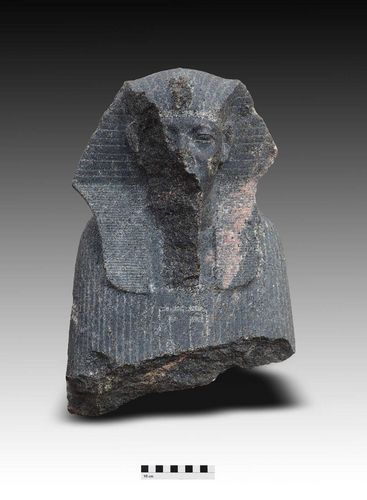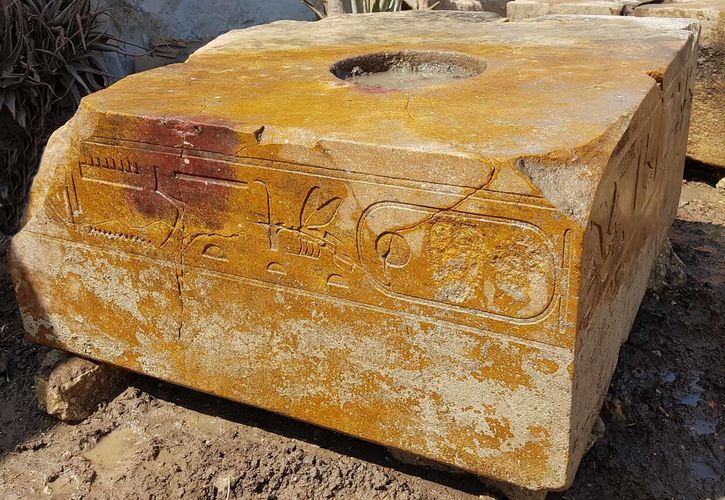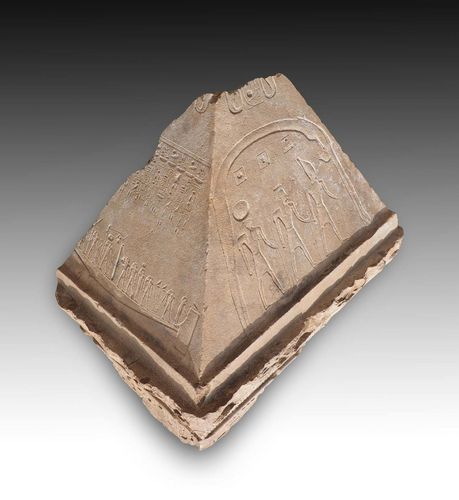A few metres to the west of the wall, fragments of a building made of light-beige silicified sandstone were recovered. Based on a few inscriptions, it can be assumed that this is a temple building from the 26th Dynasty (664–525 BC). “The finds from our excavation in spring 2022 are evidence of active royal investment in the temple of Heliopolis over various periods of Egyptian history,” said Professor Dietrich Raue, curator of the Egyptian Museum at Leipzig University, who also spent time on site in Cairo.
Other finds, such as an inscription of King Pepi I (approximately 2276–2228 BC) made of rose granite, demonstrate the pharaohs’ building projects from earlier times in Egyptian history. The team also found architectural fragments from the time of King Cheops (around 2500 BC). It is still unclear at present whether these are from a building project initiated by the king in the temple of Heliopolis or whether they originate from his pyramid complex in Giza and were reused.
Further finds include statue fragments of kings of the Middle Kingdom such as Amenemhat II (1878–1843 BC) and of kings of the New Kingdom such as Thutmosis III (1479–1425 BC), Amenophis II (1425–1400 BC), Amenophis III (1388–1351 BC), Haremhab (1319–1292 BC) and Ramesses II (1279–1213 BC). Most of the statue fragments are sphinxes. Fragments of a model of miniature sphinxes paid for by Amenophis II are also among the new discoveries. In addition, the researchers found fragments of stone shrines to gods of different kings, such as fragments of a shrine of Seti I (1290–1279 BC), Osorkon I (922–888 BC) and Psamtik I (664–610 BC). A silicified sandstone pedestal of King Amasis (570–525 BC) is also among the recovered artefacts.
The Egyptian-German undertaking, which also involved researchers and students from Leipzig University’s Institute of Egyptology and Georg Steindorff Egyptian Museum, was led by Dr Aiman Ashmawy from the Egyptian Ministry of Tourism and Antiquities and Professor Dietrich Raue, curator of the Egyptian Museum at Leipzig University, in cooperation with Professor Kai-Christian Bruhn from the Institute for Spatial Information and Surveying Technology and Mainz University of Applied Sciences. The work also took place in cooperation with the University of Pisa. The excavation campaign was made possible by the German Research Foundation (DFG), the Donation Eckhard Sambach, and the Egyptology Forum at the University of Zurich.
































































